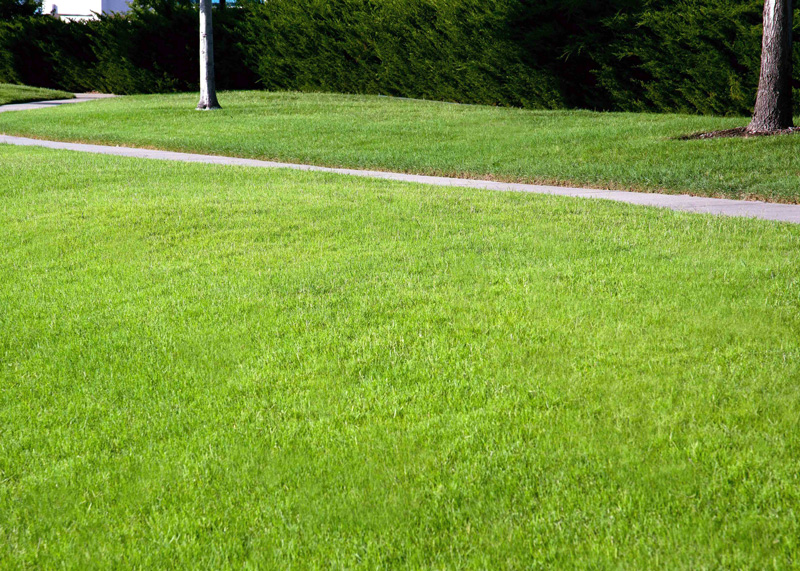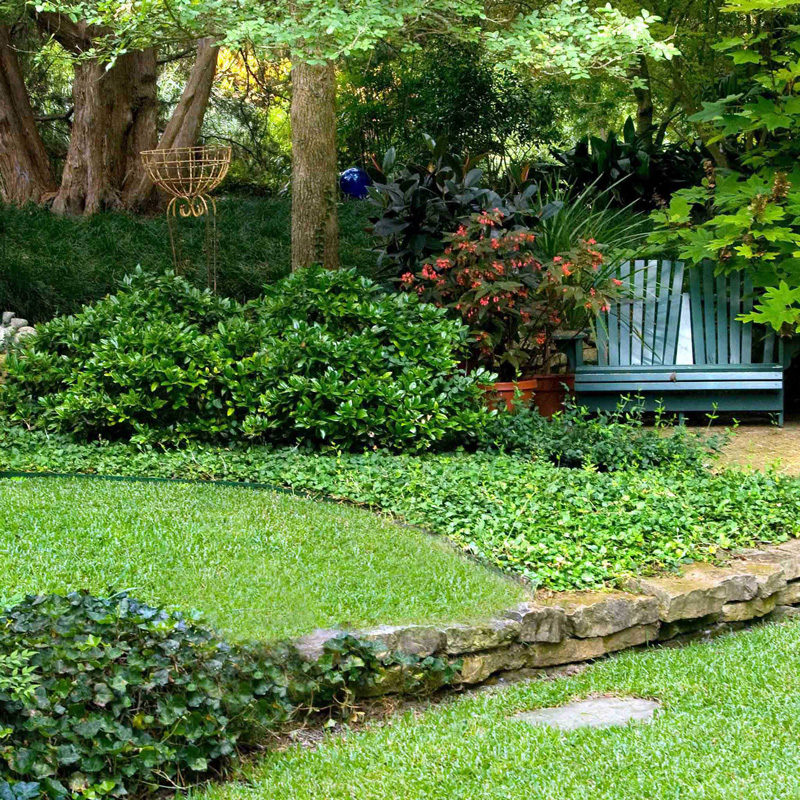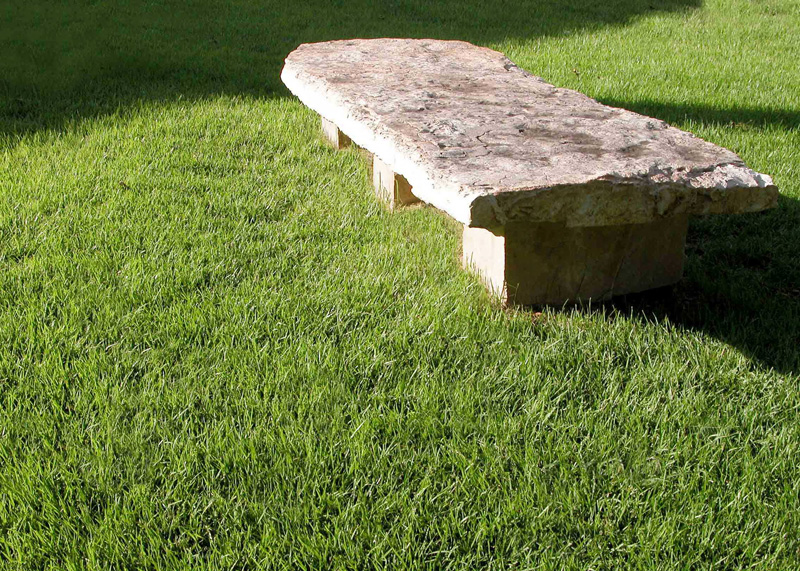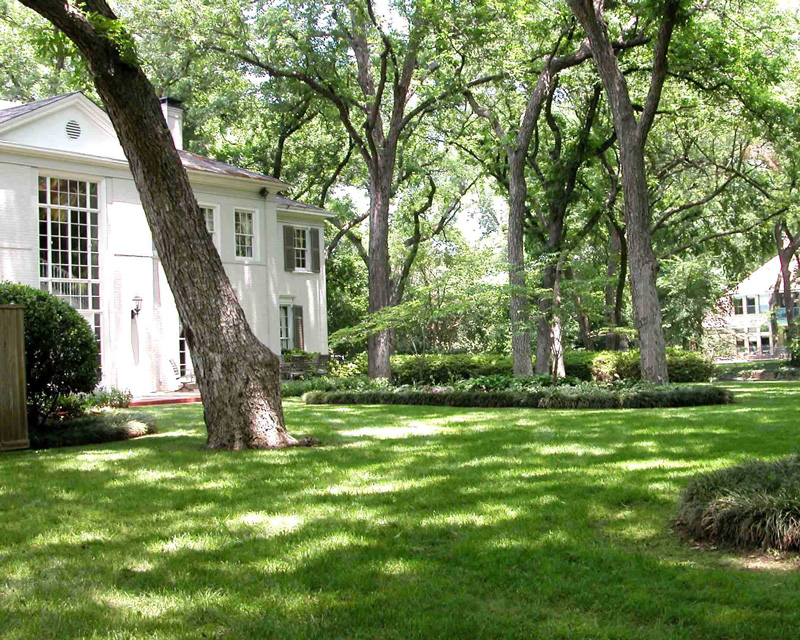Turfgrass Guidelines
The past several years have been brutal to Texas lawngrasses. Two record cold winters and a couple of droughts thrown in for bad measure. Folks are clamoring to plant new turfgrass to fill in the bare spaces. If that sounds a familiar chord with you, think things through before you take the leap.
Which grass would be best?
Conditions vary greatly from one part of Texas to another. They can even vary from one part of your yard to another. Preferences can even vary from one person to another. I can boil things down, however, to some critical facts that might help you narrow your turfgrass choices. Planting time will be here in 6 or 8 weeks. Take a look.
Common bermuda:
This is the most popular turfgrass in the northern half of Texas, and rightfully so. But it’s not without flaws.
Assets…
• Drought-hardy
• Tolerant of pedestrian traffic (humans and pets),
• Inexpensive to plant (seed, although sod is also available)
• Fine-textured,
• Adapted to a variety of soil types.
Liabilities…
Invasive into gardens and beds – hard to prevent and almost impossible to eliminate,
• High levels of fungus spores, so quite likely to cause allergies,
• Intolerant of shade.
Hybrid bermudas:
Many of these have been developed for golf courses, football fields and other athletic field uses. Many originated in Tifton, Georgia, hence the introductory name of “Tif – __.”
Assets…
• Extremely short for the ultimate in a manicured look,
• Very fine textured,
• Fairly tolerant of foot traffic.
Liabilities…
• Expensive to plant (sod, plugs or hydromulching),
• Very high maintenance due to frequent mowing,
• Expensive equipment required,
• Fungus spores likely to cause allergies,
• Intolerant of shade,
• Frequently invaded by common bermuda.
St. Augustine:
This is the turfgrass of greatest choice in the southern third, perhaps half of the state.
Assets…
• Our most shade-tolerant turfgrass,
• Maintains bright green color all season,
• Crowds out other grasses and most weeds (except nutsedge and dallisgrass).
Liabilities…
• Intolerant of foot traffic because it has only stolons (above-ground runners),
• Not as winter-hardy as other grasses in northern parts of Texas,
• Requires more water than bermuda,
• Subject to a few more insect, disease problems than other grasses.
Zoysias:
Growing in popularity across Texas, but not yet “the perfect lawngrass,” so don’t expect it to solve every problem. Nonetheless, a very attractive option.
Assets…
• Intermediate to bermuda and St. Augustine in respect to texture and shade tolerance,
• Growing in popularity and a good choice in many parts of Texas if you find a variety well suited to your area.
Liabilities…
• Expensive to plant (sod),
• Slow to cover if planted from plugs,
• Comparatively long “brown” season in winter.
Buffalograss:
Introduced to Texas landscaping in early 1990s, it soon dropped in popularity as bermudagrass invaded the early plantings.
Assets…
• Drought-tolerant (but turns brown when dry, almost a fire hazard)
• Native to Great Plains, so suited to many Texas soils, climate.
Liability…
• Easily invaded by bermuda if a seed source is nearby. This is a huge downside, as most buffalograss lawns have evolved into bermuda turf within just a few years. There is no way to stop it from happening.
Tall Fescue:
A better candidate for lawns in the Texas Panhandle than it is farther south and east where summer nights remain hot and humid. It’s a clumping grass (no runners).
Assets…
• Cool-season grass that is green all winter, and where summers are mild in Panhandle and mountains of West Texas,
• About as tolerant of shade as St. Augustine is.
Liabilities…
• Difficult to keep through a hot Texas summer, especially in the eastern and southern parts of the state,
• Must be seeded in September,
• Must be “over-seeded” each September to maintain thick stand,
• Will be out of sequence with warm-season grasses (green when they aren’t, and relatively brown when they’re green),
• Must be mowed much higher than warm-season grasses.





